Among the gardeners, summer houses and gardeners, forest berries are especially valued, which contain a huge amount of useful elements and vitamins. The summer period in the countryside is closely related to the collection of berries for preservation and frost, so that then all winter gets tasty darity of the forest. However, the process of collecting the same blueberries or lingonberries is quite complex and tedious, so the scholars of breeders were withdrawn the garden varieties of delicious Blueberry berries, which everyone can grow in its site. Garden Blueberry, the cultivation of which has a number of its features and difficulties, will perfectly complement your garden and every year will please a large harvest of delicious and useful berries.
In order to receive a good crop of large berries from each bush, in this article, consider all the features and morphological description of this culture, we present the characteristics of the most popular sorts of garden blueberries. We note all the important rules for the agricultural machinery growing in the garden.
Features and morphological Description Blueberry
Blueberry is a wonderful northern berry, which at the beginning of summer, like a magnet attracts all the berries in the forest. This plant is most often found next to the pines, which is associated with similar growth conditions: both cultures prefer a seventeenth, close grounding of groundwater. Therefore, certainly where the pine grows, her foot need to look for small and lush blueberry bushers. This berry is considered to be northern, as it grows in nature in the Taiga regions of Asia, Northern Europe, for example, in Finland, in the subarctic belt and in North America.
Blueberry is a perennial grassy plant that belongs to the genus Vaccinium and the family of heers. This family was recently allocated to another - cruising. The scientific name of the blueberry of Vaccinium Myrtillus occurred from the Latin word, which in the translation denotes the "cow". This is due to the fact that the leaves of some types of blueberries used farmers as feed for cows. Its species name of the blueberry Mirtollut is a plant for great similarity with the Mirt. On the territory of Russia and other countries of the near abroad, this beroda is called blueberries, which is associated with the color of the berries themselves and their juice, from which the hands and mouth remain a purple-black. There are many of the names of blueberries in the people, which also reflect some external features of the plant: Chernega, Blueberry, Cenette, ink. It is worth noting that blueberries are related to the same useful and delicious berries - with a lingonberry, cranberry and blueberries, which can also be grown in the garden.
Today there is simply a huge number of different types and varieties of blueberries, which have different differences from wild forest berries, as they are derived by breeders by crossing, for example, with blueberries, which is very similar to blueberries by properties. In any case, the garden blueberry gives a large harvest of the same tasty and useful berries. At the same time, if you have a desire, you can go to the forest and dig up a bunch of wild blueberries, which in the future can be planted on its site. However, a good crop from such a plant is extremely difficult to get.
Description Blueberries:
- Blueberries are a low-spirited, long-term, leafy shrub, which on account with other forest berries, belongs to the lounge family and is considered valuable and useful berries.
- To date, this northern berry can be like wild, which grows in the forest and the garden, which has been specifically derived for landing on the backdrop.
- The root system of blueberries is represented by a fairly strong rhizome, from which small roots move, which penetrate in just 5-10 cm. However, despite this plant sits tightly in the soil.
- Blueberry bush can be formed by several terrestrial shoots that have a brownish shade. They are pretty thick and have a ribbed surface with small gutters, thanks to which the rain water rolls to the roots.
- From the shoots under an acute angle, branches are departed, which can be both a young green shade, and already weird.
- In height, all the plant can reach about 10-50 cm, the specific dimensions depend on the type and variety of blueberries.
- All twigs are thickly covered in the next manner with small oval leaves, which are attached with short cuffs.
- Sheet plate oval-rounded shape with a sawd edge. In the spring and summer, the leaves of light green color, and the bright red shade becomes in the fall.
- In the spring, approximately in May, at the base of young branches, there are small and non-sparkling flowers of a pinkish green shade. Flowers are single, the crown consists of 5 teeth, as well as 10 stamens and 1 pestle. Color head is tilted down, which protects them from dampness. Familibians are bees and bumblebees.
- Blueberry fruits are an oval or rounded berry, which in diameter can reach about 0.6-1 cm. The berry has a dark blue, almost ink color, on the surface of the fetus you can see a peppy flare, which is easily erased with your fingers. Inside purple berries, plenty of juice, which colors hands.
- Blueberry fruits on average from July to September.
- Berries of this plant love birds, thanks to which the seeds of blueberries are spread.
- Blueberry seeds are very small, are inside fruits.
- Growing blueberries in the garden is not a difficult matter, however, to obtain a crop requires compliance with all rules and conditions.
- This plant has good sustainability to heat and frost, can grow perfectly on any basis and has immunity to many diseases and pests.
- Blueberry is used to prepare various conservation, berries frozen, peat with sugar, dried. Blueberry leaves and berries can be used for medicinal purposes. In addition, many gardeners are grown by a blueberry ordinary on alpine slides or in rocky gardens as a decorative plant.
Variety of types and varieties of blueberries
To date, there are about 100 varieties of blueberries, which are distinguished by the conditions and place of growth, as well as external characteristics. All varieties of blueberries are conditionally divided into groups in height of the bush, depending on the maturation time. It is important to remember that the cultural varieties of blueberries are grown in culture, since there are no varieties of this plant. In the literature, both Blueberry varieties are presented in garden shops, but blueberries are in close relatives. Such confusion occurred because in English both berries call the same - Blueberry, consider the characteristics of the most popular species and varieties of delicious forest and garden berries.
- Blueberry ordinary. The territory of the European part of Russia, Siberia and the Caucasus is considered a natural habitat. Prefers to settle in pine and coniferous forests, in which it often makes up most of the vegetation cover. In the height of the bushes of this species can reach about 15-40 cm in height. The bush is formed by shoots and green twigs, which are densely covered with a rounded light green foliage. Sheet plate has a pilt edge. In conjunction in July, rounded Sisovo-blue berries with a diameter of 0.6-1 cm began to ripen on branches.
- Forest blueberry. This type of blueberry is growing only in forests and it is not advisable to transplant in the garden plot, since it requires a fairly complex conditions for its cultivation.
- Caucasian blueberries. It is a relict plant that has been distributed in the Caucasus, the northern part of Malaya Asia, as well as in some areas of Bulgaria and Northern Iran. It is a fairly large leafy shrub, which in height can reach about 2-3 meters. The same large leaves and berries are growing on the branches, which are also used as the blueberry fruits. This species is characterized by a fairly low coolness.
- Blueberry is pole. The natural habitat of this type of blueberry is considered the territory of Japan and Sakhalin, where this plant prefers to settle in mixed and coniferous forests. It is a long-term, leafy shrub, which in height can reach about 1 meter. The branches and shoots of the cookies are thick covered with oblong, egg-shaped leaves with a pointed top. In summer, the foliage of a light green shade, and in the fall acquires the carmine color. Berries of blue-black color, spherical shape, in diameter can reach 5-7 mm.
- Blueberry ovalnoliste. The natural habitat of this variety of blueberries is considered the territory of Sakhalin, Kuril and Commander Islands, North America and Japan. It is a tall shrub that can grow up to 4 meters. The plant does not bloom and tolerate cold.
Popular varieties of blueberry garden:
- Sort "Spartan". It is a high plant up to 2 m, which in the first years grows very slowly. The main advantage of the variety is their major berries, the weight of one can be 5 grams. The yield of culture also affects - from one bush can be collected up to 9 kg of berries. Sort of blueberry Spartan is characterized by good frost resistance - can withstand frosts up to minus 40 degrees.
- Grade "Blussher". One of the most popular sorts of garden blueberries, which was obtained when crossing with blueberries. It is a large shrub up to 2 meters in height. It has a high yield of up to 9 kg with a bush and a medium-sized berry with a tart taste. The plant perfectly tolerates drought and cold, but does not endure humidity.
- Grade "Legacy". Buckets in height can reach about 1.5-2 meters. Middle Berries with a pleasant taste and aroma. It has a stable and fairly high yield.
- Sort "Top Hat". It is a plant height up to 30-40 cm. Blueberries of this variety are large, very juicy and fragrant. Bustard can be grown in containers in balconies. The variety is characterized by good frost resistance.
- Blueberry variety "Bonus". This variety is ideal for regions with a cold climate, for example, for Siberia. Differs in high yield and frost resistance. From one bush, you can collect up to 5 kg of large, sweet berries.
Blueberry reproduction: the most common ways
To get a whole blue cleaner on your household plot, there is no need to immediately buy a huge number of seedlings. It is enough to buy a few, and in the future it is simply to use the reproduction of blueberries available. This culture is multiplied with several methods: seed reproduction, with the help of cuttings and dividing the bush. Each variant has various characteristics, consider the basic rules for breeding blueberries in different ways.
Seed reproduction of blueberries
- This method of breeding delicious berries is quite simple, so even an inexperienced gardener can cope with it.
- First of all, it is necessary to wait for the full ripening of blueberry berries so that the fruits were saturated dark color, dense and elastic.
- Next, crush a pair of berries and the resulting flesh must be pouring water. All small seeds that dropped to the bottom are perfectly suitable for breeding. Remove them from the water and dry.
- Some gardeners immediately sow seeds into the ground, others advise to pre-conduct the process of stratification by placing the seeds in the ground and in the refrigerator.
- After that, prepare a suitable container that needs to be pre-filled with soil mixture from sand and peat.
- Moisten the soil and drink seeds into it. If the stratification was not carried out, then they can be sung in the fall.
- The container can be covered with glass or film to create a greenhouse. At this stage, regular watering and ventilation is required.
- The first seedlings will appear after a couple of weeks.
- In the future, it is necessary to observe watering regime.
- For the winter, containers with seedlings are recommended at room temperature. And in the spring, to spend the first pickup.
- In the open soil, young bushes are planted only in a year.
- Some gardeners for receiving seeds use frozen berries. In this case, the planting material has already passed the stratification process.
Blueberry reproduction of stallowing
- To carry out this method of reproduction, it is necessary that adult bunchy bushers grow on the site.
- It is best to harvest the planting material at the end of summer, because for landing into an open ground, seedlings should be rooted and stump, overwhelming already in the ground.
- Choose on your site the largest and branched bushes, after which take the knife or the secateur and cut strong and healthy twigs for cuttings.
- To accelerate the rooting of the planting material, the cuttings are recommended for a couple of hours to lower in the container with the rooting agent.
- Next prepare drawers filled with peat. Abundantly moisturize them and root the cuttings.
- Be sure to create greenhouse conditions. For this tank covered with film.
- Further care for young seedlings is to ventilate and regular and abundant irrigation.
- At about the end of September or by the beginning of October, the blueberry cuttings are rooted.
- From the entire landing material, select the most stronger with the developed root system and land them on a pre-prepared area. Saplings should be overwhelmed under the snow, then the spring young plants will actively go into growth.
Reproduction of blueberry division bush
- Conduct the division of blueberry bushes in the autumn period.
- It is necessary to neatly dig up the adult bush and slightly smooth the roots.
- Next, using a knife or a secret, divide the maternal bush into several parts in such a way that each decene has at least 5 healthy renewal renovation.
- Suggest young plants at a pre-prepared plot.
Blueberry landing - phased instruction
Landing the blueberries on its plot - it's not a simple thing. This process requires careful preparation and execution of all conditions. It is important to purchase high-quality planting material in advance, as well as pick up and prepare a place for landing on the site. Only when complying with all the nuances it is possible to grow in its garden with a blueberry glade. Consider all the stages of preparation and actually the garden landing process in more detail.
Stage 1. Choosing and purchase of blueberry planting material
- The most important step to getting the box is the choice and purchase of planting material. Immediately it is worth noting that to transplant the bushes of forest blueberries on the garden plot - it is useless. Many gardeners and scientists tried to grow exactly a wild blueberry, but after the suggestion, these plants were not tied with berries. Therefore, it is necessary to use only garden varieties.
- Burrying blueberry seedlings are needed only in specialized garden shops or nurseries, which are professionally engaged in breeding plants.
- At the same time, you also need to be very impressive. After all, you can easily sell seedlings not blueberries, but blueberries that are very similar, but they have completely different berries. To avoid such unpleasant moments, buy landing material only from proven sellers.
- It is best to buy two-year or three-year-old blueberry saplings.
- Before buying, carefully check the seedlings. They should not be visible damage and signs of diseases. It is advisable to buy seedlings with a closed root system in containers. If the planting material is purchased with open roots, during transportation, do not forget to completely cover the roots with a soil or wet material. Blueberry roots quickly dry and die.
Stage 2. Choosing a place for landing blueberries
- It is important to correctly pick up the landing of blueberries, since this plant is quite capricious and may not grow everywhere.
- An ideal landing destination is a space with an acidic soil, which is in a small shadow. In this case, it is desirable to be optimally planted under the shadow of garden trees, it is desirable that the shading be at the midday time.
- It is possible to plant blueberry seedlings in sunny areas, but in this case they will have to regularly water the plants and organize shading.
- It is also important to choose a plot with close grounding of groundwater. Ideal if it is a wetland, where other plants are not growing.
Stage 3. Choice and preparation of soil for blueberries
- For a planted blueberry gave a good harvest, it is important to carefully carefully approach the choice and preparation of the soil. Especially if it concerns forest blueberries.
- First of all, the soil should be light and nutritious with the necessary acidity. Also be sure to pay attention to the humidity, better if the soil waters are close.
- For the preparation of the soil and landing holes, it is necessary to do about 3 weeks before landing seedlings. First of all, the site is all loosen and thoroughly loose. Next, dump the pit and the top layer of the soil necessarily mix with peat. You also need to add sulfur or citric acid to acidification, you can use the spurry.
- If the soil on the site is too heavy, when processing a plot, add to it rebeling oak foliage or river sand.
- The soil mixture is falling asleep back into the pits and leave so about 2 weeks.
- After that, you can start landing blueberry seedlings.
Stage 4. Blueberry Planting Process - Step-by-Step Description
- In warmer regions with a soft and short winter, blueberry seedlings are recommended to plant approximately in August - September. In the regions, with moderate and colder, the best time for planting blueberries is a late spring, when the threat of return freezers passes.
- First of all, it is necessary to remember the observance of the distance between the landing pits, which should be approximately 100-150 cm. If the seedlings are planted in several rows, then between them you need to leave a distance of 2-2.5 m.
- The dimensions of the landing holes should be as follows: 60 cm wide and length, 70-80 cm in depth.
- At the bottom of each landing pit, place the drainage layer, which consists of a broken brick or clay.
- Blueberry seedlings are better to acquire with an earthen room - so they are better and faster will come down in a new place. Remove the planting material from the containers and slightly burst the soil on the roots.
- Next, the filled landing pits are spilled by a solution of water and citric acid, which is prepared at the rate of 1 teaspoon on the water bucket.
- After that, in the ground, make a deepening and place a seedling into it, neatly straightening the roots.
- Pour young plants with soil and compact it with your hands.
- After planting abundantly, pour the blueberries and climb the surface of the soil by a cheese or peat.
Grinding agrotechnics Blueberry: Secrets and nuances of care
Caring for blueberries is quite specific, this plant requires your permanent attention and care. Only under the observance of all nuances of growing agricultural equipment, you can get strong and healthy blueberry bushers, giving a rich yield of useful berries.
- Watering. This is one of the most important stages of blueberries. Watering bushes need not abundantly, but regularly. Approximately 2 times a month, and with hot weather more often, shed planted plants in such a way that the soil is well soaked in moisture. You can navigate on the top layer of the soil - about 15-20 cm deep into it should always be slightly wet, but not raw. Here the main thing is to observe the measure to accidentally do not pour the blueberries. Once a month, it is recommended to water bushes with a solution of water and citric acid.
- Loosening and mulching. A couple of times per season, the soil around bush can be seen. An important part of the departure is considered a layer of mulch, which must be updated regularly. It helps protect the roots of the plant from the evaporation of moisture, thereby reducing the amount of irrigation. As a mulch, you can use a mixture of sawdust, needles and peat with a thickness of 4-5 cm.
- Undercalinking blueberries. Blueberry berry reacts enough to make organic fertilizers. It is enough once a year in the spring to introduce some complex mineral fertilizers. The rest of the time it is recommended to fertilize the soil peat mixed with cheese and foliage.
- Cutter trimming. Blueberry bushers are needed about 3-4 years old. On one bush should be 7-9 shoots, the rest are necessarily cut off. In addition, to get a good yield of berries who have reached 4 years of branches cut to a length of 20 cm. All side shoots are also deleted. When the bush turns 15 years, it is necessary to trim all shoots up to 20 cm, thereby rejuvenating a plant.
- Fighting pests and blueberry diseases. Blueberries are distinguished by relative resistance to various diseases and pests. However, sometimes problems can still arise. From the pests, the greatest harm is made to Tlya and the Shield, to combat the insecticides of the accuters or actuar. From diseases worth noting rust and gray mold, which appear in non-compliance with the conditions of care. In this case, it is necessary to apply fungicides. If the plant is sick of spotting, then you need to immediately dig and burn it, and the soil process.
Blueberry - Photo
Blueberry is one of the most delicious and healthy forest berries to gather that you need to go to the nearest forest and make a lot of effort to get a small basket of valuable fruits. To make it easier for this process, the blueberry can be planted on its garden plot and each year to be rich in a rich harvest of berries.

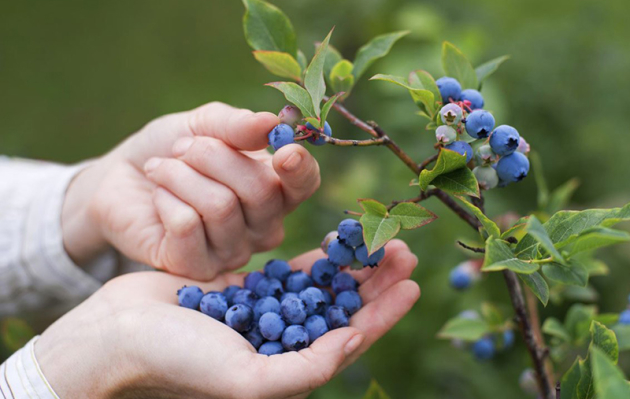
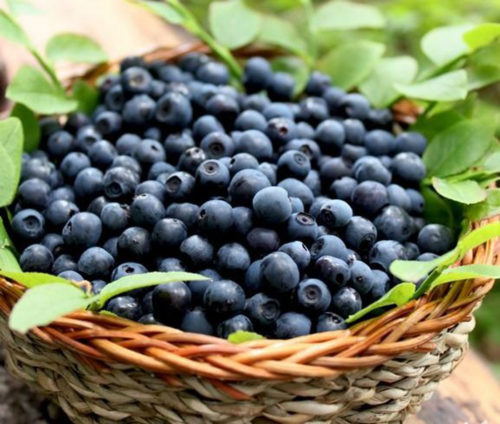
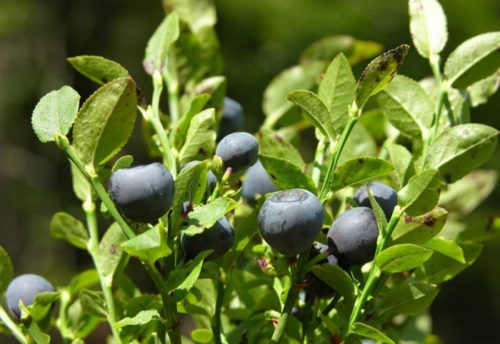
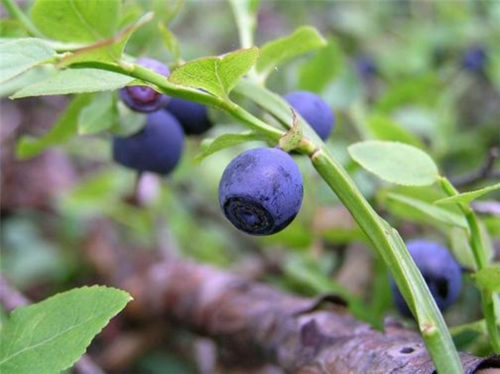

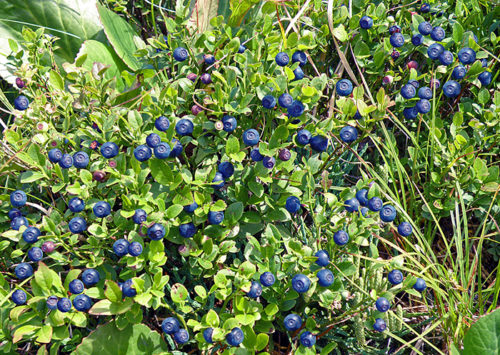
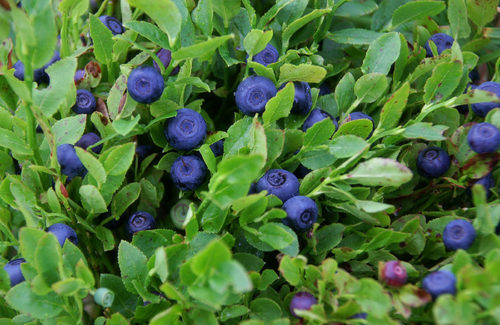
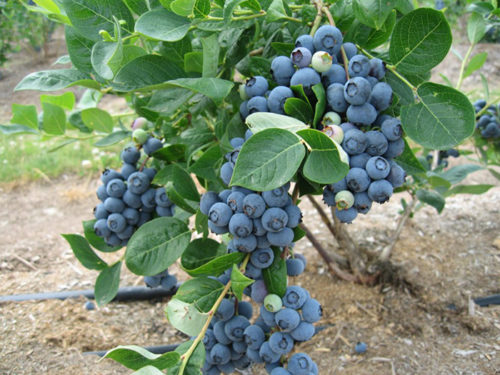
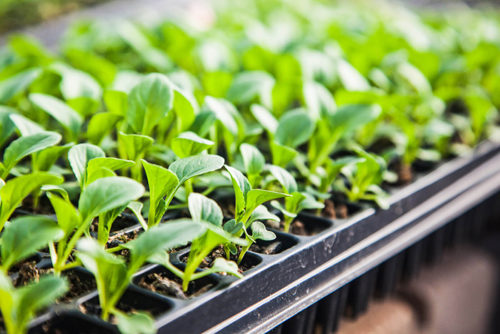

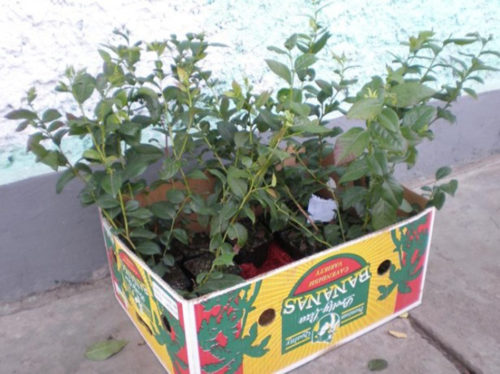
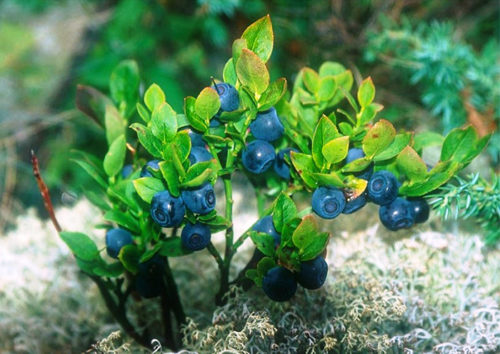
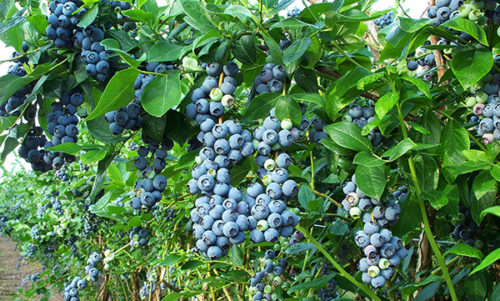

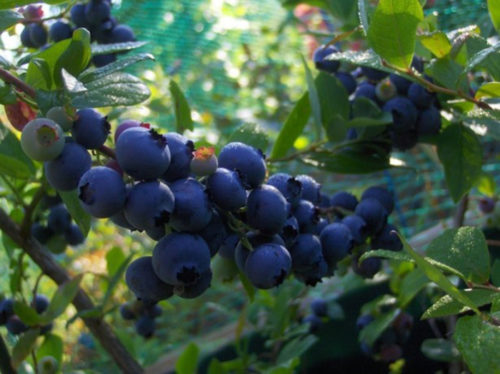
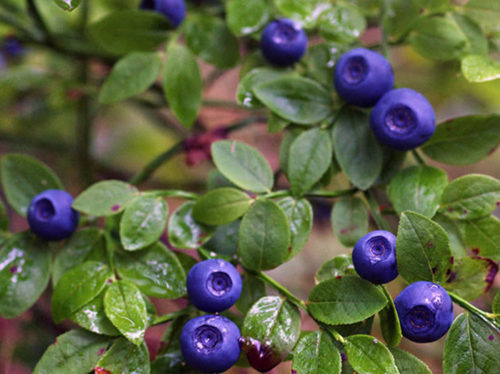
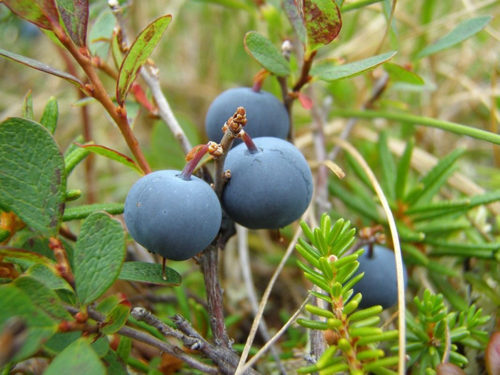












 Start a discussion ...
Start a discussion ...